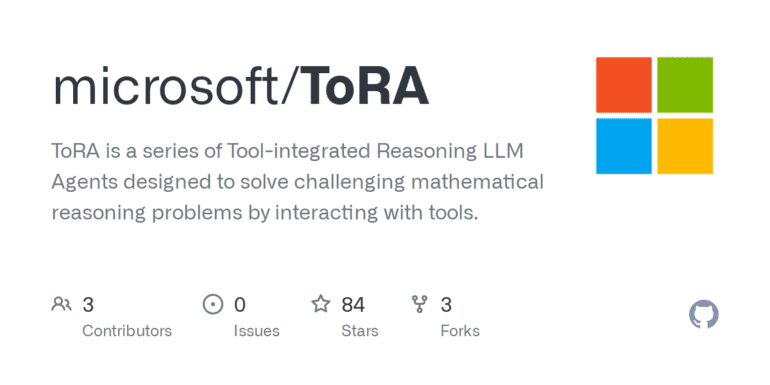TL;DR:
- ToRA, or Tool-integrated Reasoning Agents, is a groundbreaking approach developed by researchers at Tsinghua University and Microsoft.
- It combines natural language reasoning with external computational tools to tackle complex mathematical problems effectively.
- Traditional AI methods face challenges in nuanced reasoning, planning, and error handling, but ToRA addresses these issues.
- ToRA augments Large Language Models (LLMs) with external tools, improving reasoning and generation performance.
- It excels in both semantic and abstract reasoning and outperforms open-source models on mathematical reasoning datasets.
- ToRA’s integration of rationales with programs and its analysis of tool interaction benefits promise a new era in mathematical problem-solving.
Main AI News:
In the ever-evolving landscape of artificial intelligence, researchers at Tsinghua University and Microsoft have unveiled a transformative breakthrough – ToRA, short for Tool-integrated Reasoning Agents. This cutting-edge approach signifies a monumental leap in mathematical problem-solving, leveraging the power of large language models and external computational tools to conquer even the most intricate challenges.
The Quest for Enhanced Mathematical Problem-Solving
While the realm of artificial intelligence has witnessed significant advancements, complex mathematical conundrums have remained a formidable frontier. The ToRA initiative addresses this gap by seamlessly fusing the prowess of natural language reasoning with the capabilities of external computational tools.
The Synergy of AI and External Tools
ToRA represents a paradigm shift in mathematical problem-solving. It acknowledges the limitations of traditional methods and embraces a multifaceted approach by integrating calculators, code interpreters, and symbolic solvers. This novel approach not only transforms reasoning tasks but also provides a solution to nuanced reasoning, planning, and error-handling issues.
Unlocking the Potential of Large Language Models
ToRA harnesses the potential of Large Language Models (LLMs) by augmenting them with external tools. This synergistic integration has propelled the field forward, enhancing both reasoning and generation performance. Knowledge distillation techniques, such as LLM-generated trajectories for fine-tuning, have further facilitated knowledge transfer from teacher models to student models.
A Triumph of Reasoning
While LLMs have made significant strides in various language tasks, intricate mathematics has remained a formidable challenge. ToRA’s approach blends step-by-step natural language reasoning with program synthesis, excelling in semantic and abstract reasoning while thriving in rigorous operations. Notably, ToRA surpasses open-source models on mathematical reasoning datasets, achieving remarkable accuracy, especially on the highly competitive MATHS dataset. This groundbreaking method sheds light on the advantages and unresolved challenges of tool interaction in mathematical reasoning, paving the way for future research in this domain.
The Journey of ToRA
ToRA’s journey to excellence involved training with interactive tool-use trajectories on mathematical datasets. Imitation learning, annotations, and output space shaping refined its reasoning behavior. GPT-4 generated diverse reasoning patterns on training sets, while interleaved instructions and few-shot examples ensured prompt curation. ToRA’s efficacy, characterized by the integration of rationales with programs, witnessed substantial improvements in reasoning performance. The challenges encountered underscored the need for a deeper understanding of geometric space and addressing complex symbolic reasoning in Intermediate Algebra and Precalculus problems.
ToRA: Redefining Mathematical Reasoning
ToRA redefines mathematical reasoning by harmoniously merging natural language reasoning with external tools. It shines on ten mathematical reasoning datasets, outperforming open-source models with an impressive 13%-19% absolute improvement on average, particularly in program-based problem-solving. ToRA’s analytical prowess dissects the benefits and challenges of tool interaction, highlighting the effectiveness of its Tool-integrated Reasoning format that seamlessly interweaves rationales and program execution.
Conclusion:
The introduction of ToRA marks a significant advancement in the field of mathematical problem-solving. By seamlessly blending natural language reasoning with external computational tools, it offers enhanced capabilities and accuracy in tackling complex mathematical challenges. This innovation has the potential to disrupt the market by providing more effective solutions for mathematical problem-solving tasks across various industries.

